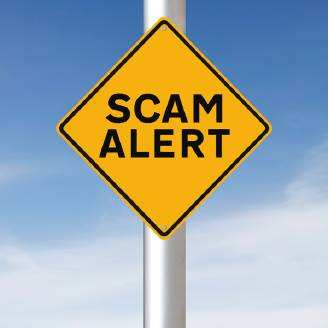Free public Wi-Fi, available at places like airports and coffee shops, are convenient, but can be risky.
How It Works:
Scammers monitor commonly used Wi-Fi network names, and set up their own “evil twin” access points in hopes your computer or device will automatically connect to it without your consent. Or they launch a “man in the middle” attack, by hacking in between you and your Wi-Fi connection. Their goal? To grab your emails, credit card numbers, and passwords.
What You Should Know:
Any data you send over free public Wi-Fi is vulnerable, so be thoughtful about how you use it.
What You Should Do:
- Ask an employee at the location offering free public Wi-Fi for the name of the network. Don’t just assume that “free airport Wi-Fi” is a legitimate wireless network; it could have been set up by a hacker to trick you into connecting.
- Stick to browsing the web, checking news, weather, or traffic when on public Wi-Fi.
- Avoid online banking, checking emails, making credit card purchases or even posting on social media on public Wi-Fi.
- Check your device’s settings to make sure it doesn’t automatically connect to any free public Wi-Fi that you’re in range of.
- If you find you use public Wi-Fi regularly, play it safe and sign up for a Virtual Private Network (VPN) that keeps your data secure. Some are free, while others charge a subscription.
When it comes to fraud, vigilance is our number one weapon. You have the power to protect yourself and your loved ones from scams!
To report a possible scam in your neighborhood, go to the AARP Fraud Watch Network site at aarp.org/fraudwatchnetwork. There you can add it to the "scam map" and alert law enforcement so they can investigate it. |
































































